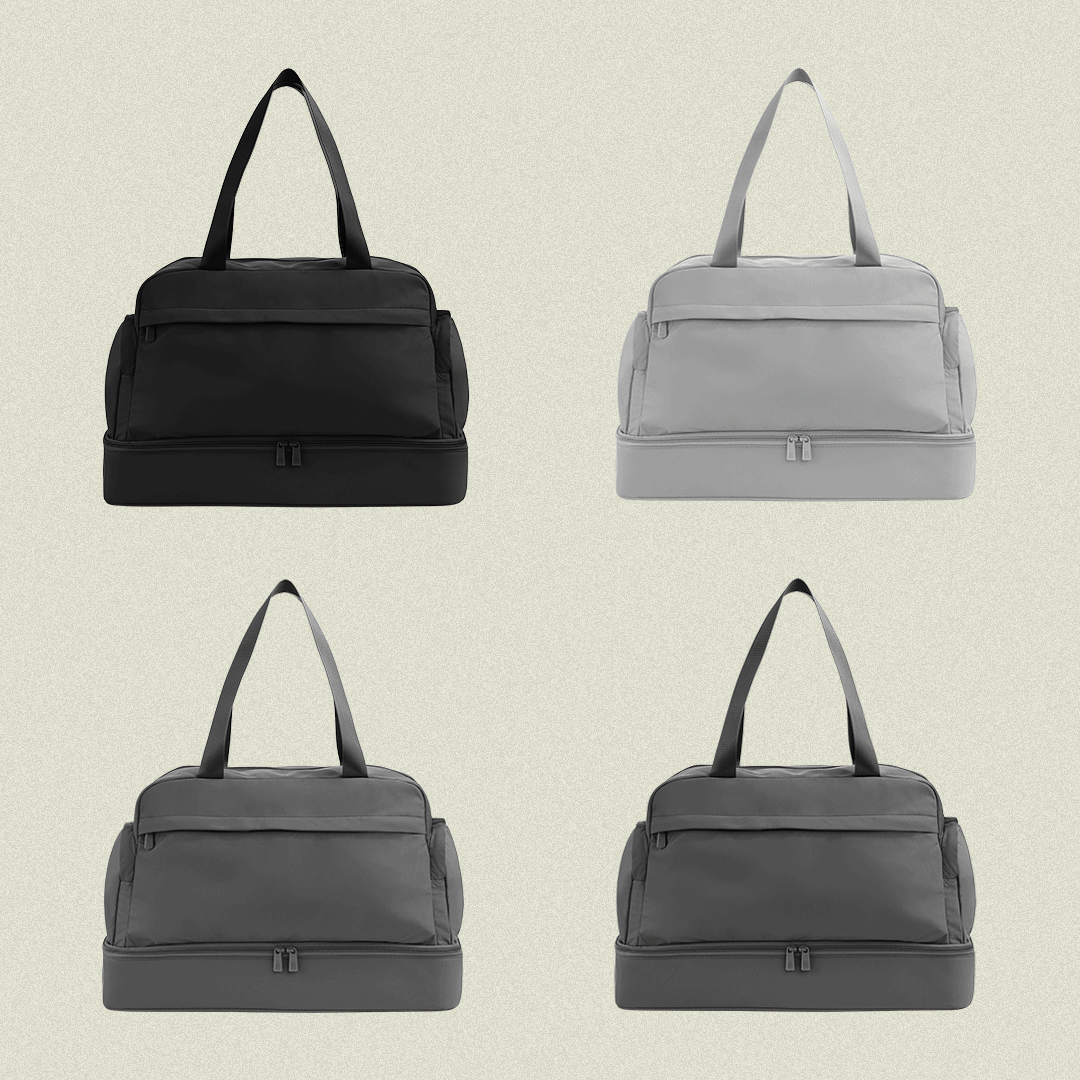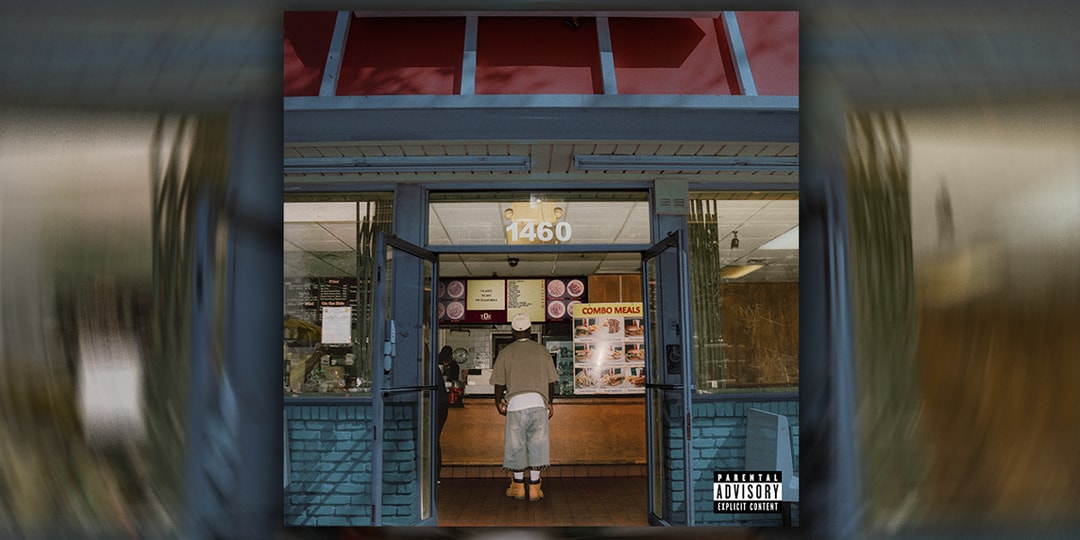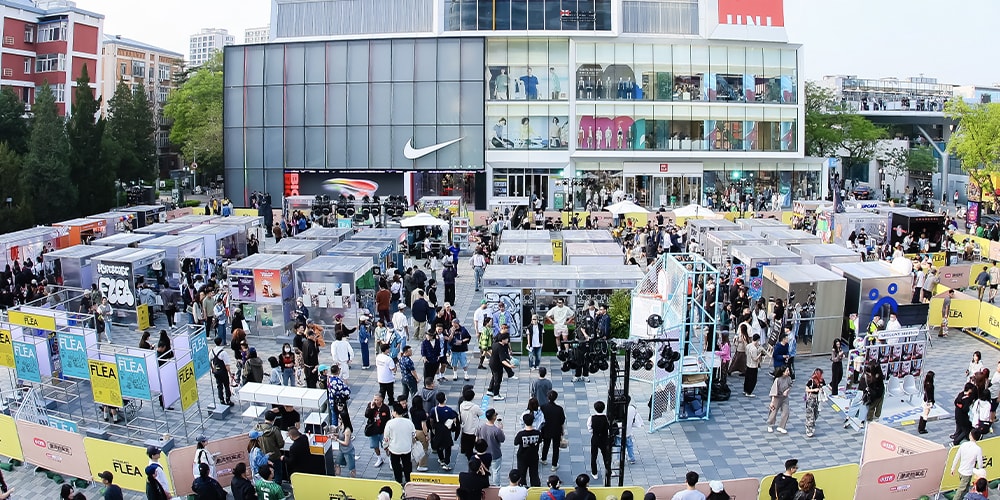10 Best Furniture Designs Of March-April 2025
10 Best Furniture Designs Of March-April 2025The past two months have been an amazing month for furniture design, showcasing creativity, innovation, and a strong commitment to sustainability and adaptability. The ever-evolving...

The past two months have been an amazing month for furniture design, showcasing creativity, innovation, and a strong commitment to sustainability and adaptability. The ever-evolving needs of modern living have inspired designers worldwide to produce pieces that are aesthetically appealing and also functional, modular, and environmentally responsible.
Whether you’re looking for a transformative piece for your compact apartment, a sustainable solution for your furry companion, or an artistic conversation starter, this month’s standout designs offer something for every taste and need. Each design here reflects the unique vision of its creators, blending functionality with artistry and responding to the demands of contemporary life.
1. Carpentopod
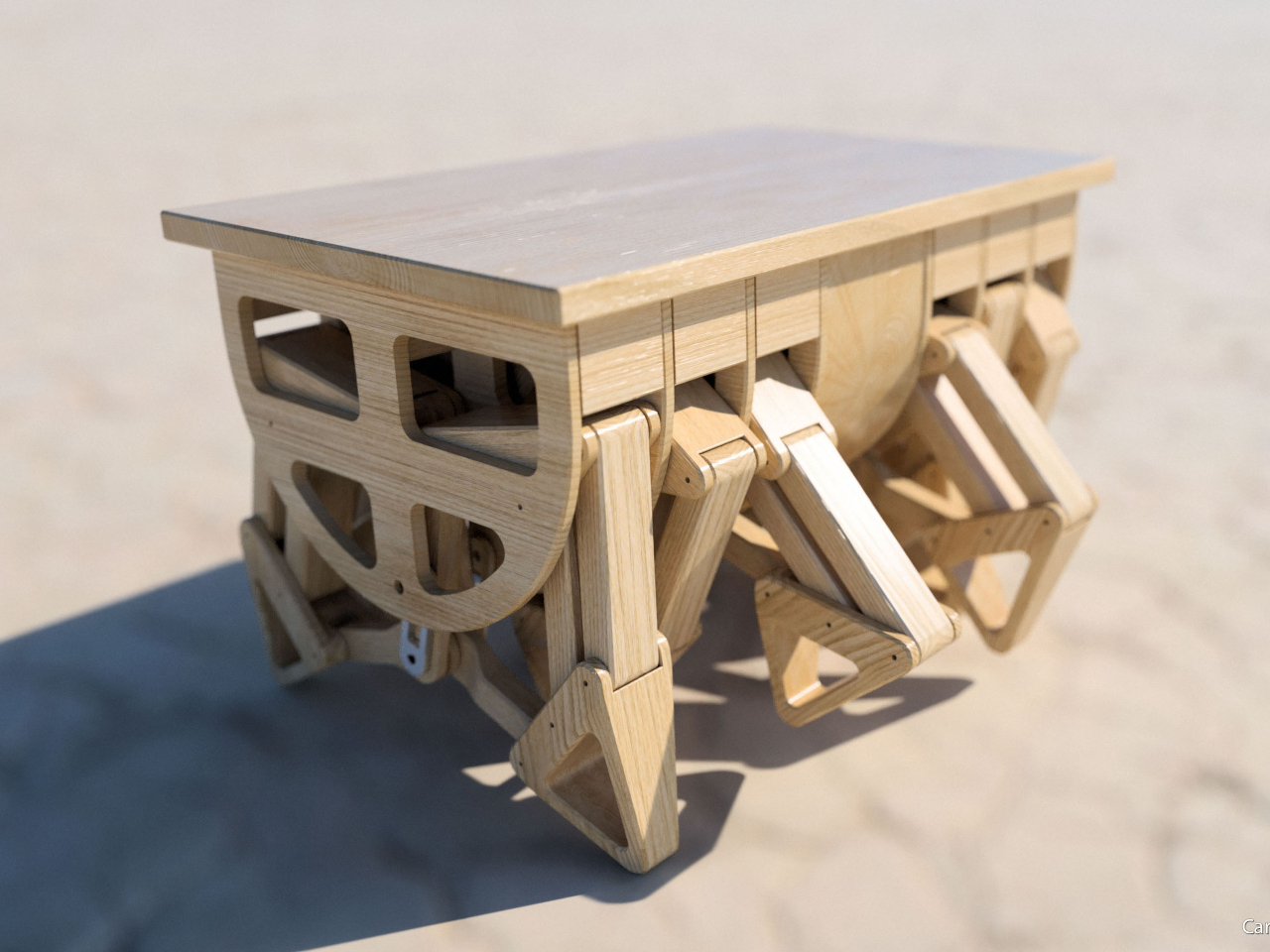
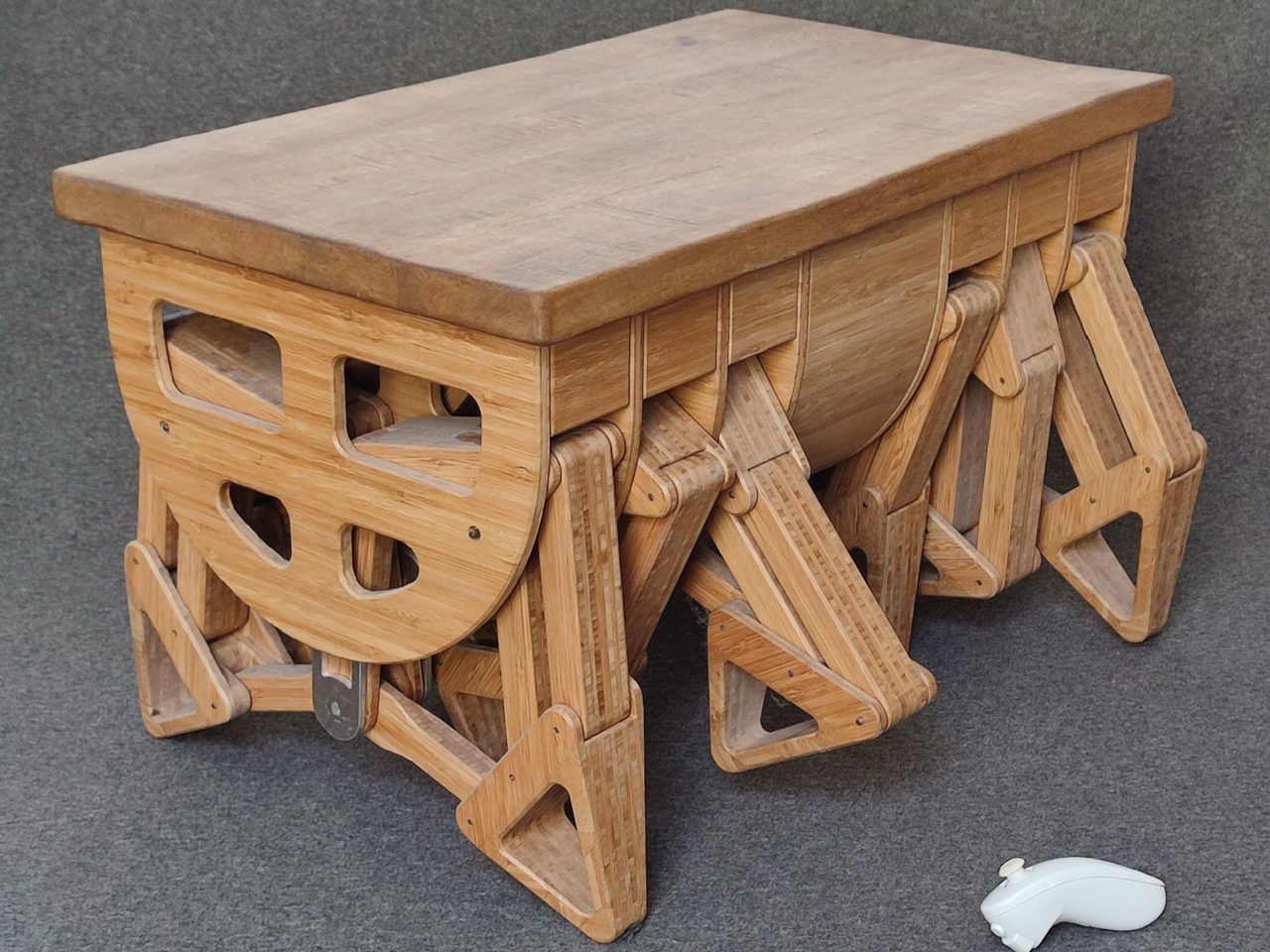
The Carpentopod is a groundbreaking fusion of classic woodworking and advanced robotics. This impressive table features 12 articulated legs that allow it to traverse a room semi-autonomously, delivering snacks and beverages at your request. By integrating robotics into a functional table, the Carpentopod redefines what furniture can do and pushes the boundaries of home innovation.
Central to its design is an intricate leg mechanism, crafted through the use of sophisticated computer simulations. Thousands of potential designs were tested using machine learning, with only the most effective achieving the smooth, stable horizontal motion needed to keep the tabletop level while in motion. This meticulous process ensures that the Carpentopod can travel without causing spills, representing a significant leap forward in mobile furniture engineering.
What we like
- Seamlessly blends artisanal craftsmanship with state-of-the-art technology.
- Delivers enhanced convenience by transporting refreshments directly to users.
What we dislike
- The mechanical complexity may lead to increased maintenance needs.
2. Chameleon Furniture
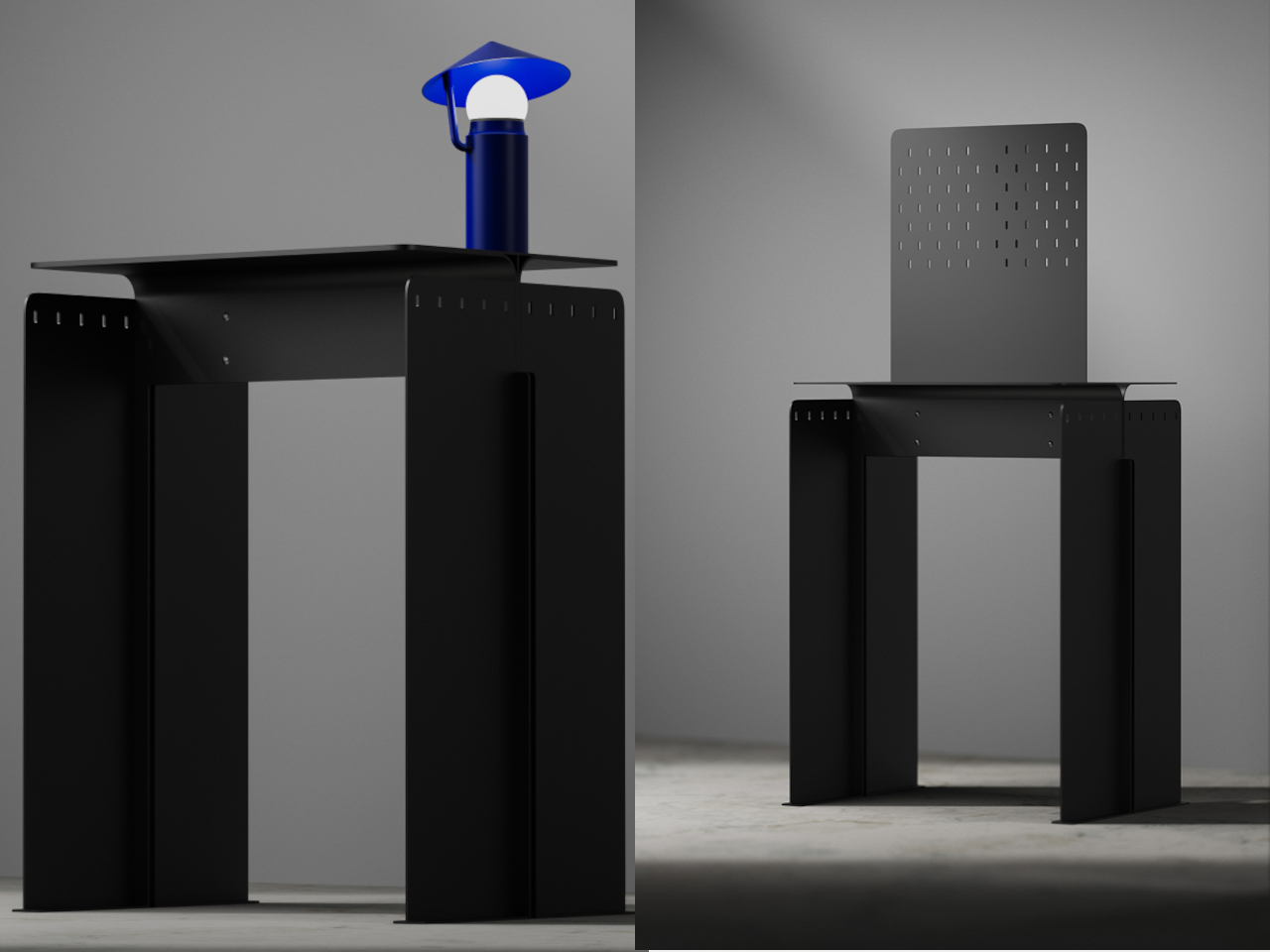
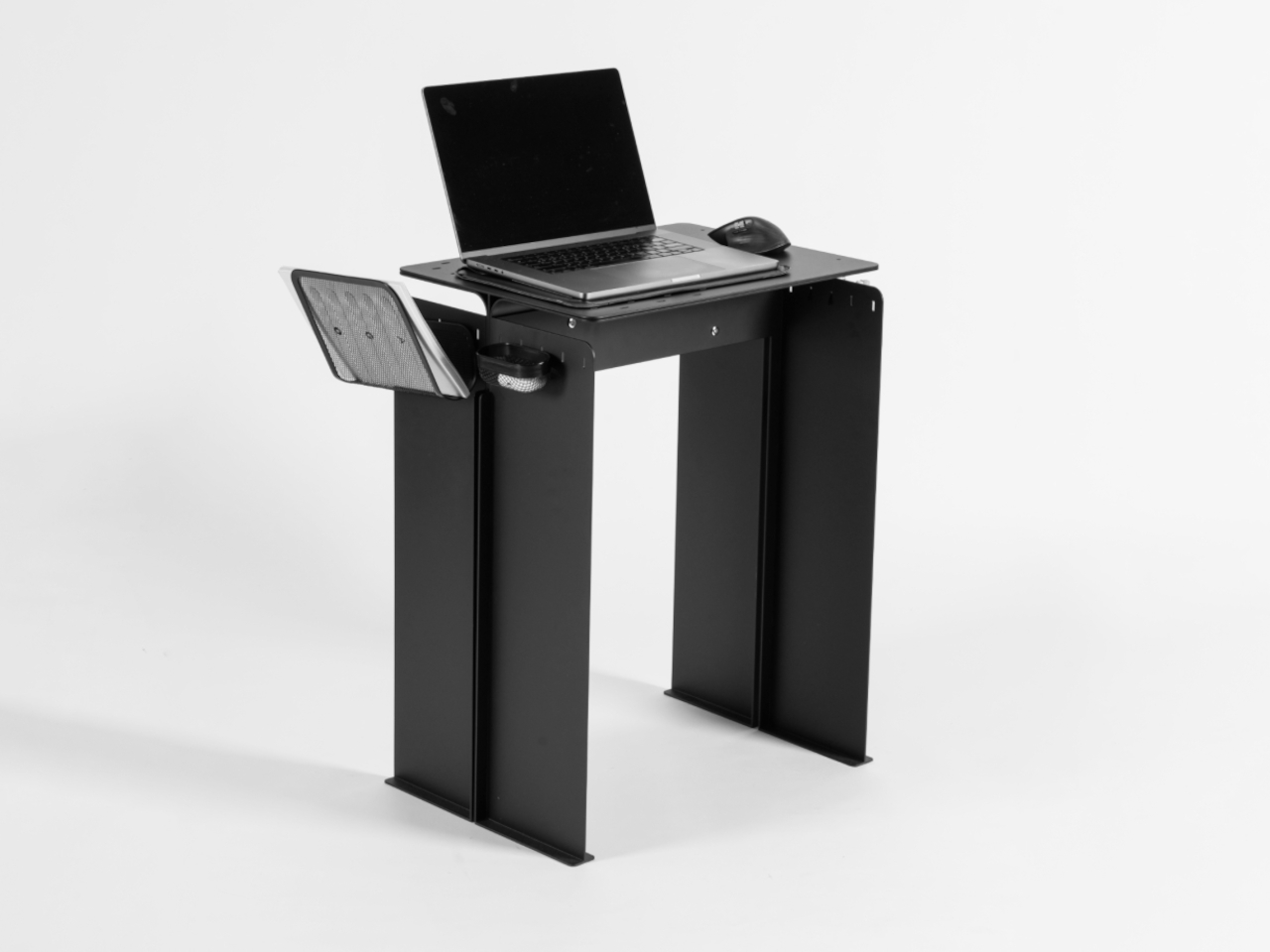
The Chameleon Furniture concept takes inspiration directly from nature’s most versatile creature, the chameleon, known for its remarkable ability to adapt to different environments. This innovative piece, brought to life with robust iron construction, embodies the spirit of transformation and adaptability. The Chameleon is more than just a clever name—it’s a solution for those who crave both versatility and strength in their living spaces.
One of the most appealing aspects of the Chameleon is its user-friendly assembly process. It relies on just four screws and a set of iron plates, making it a breeze to set up and dismantle as needed. The straightforward mechanism means you don’t have to be a DIY expert to alter your space or move the piece from one room to another.
What we like
- The furniture can easily switch between functions, making it ideal for spaces that require regular reconfiguration.
- Crafted from sturdy iron, the Chameleon offers both durability and longevity.
What we dislike
- While its industrial look suits many modern interiors, it may not blend seamlessly with more traditional or cozy decor styles, limiting its appeal to certain households.
- Users looking for a wider range of functional or visual options may find its adaptability somewhat limited compared to more modular systems.
3.

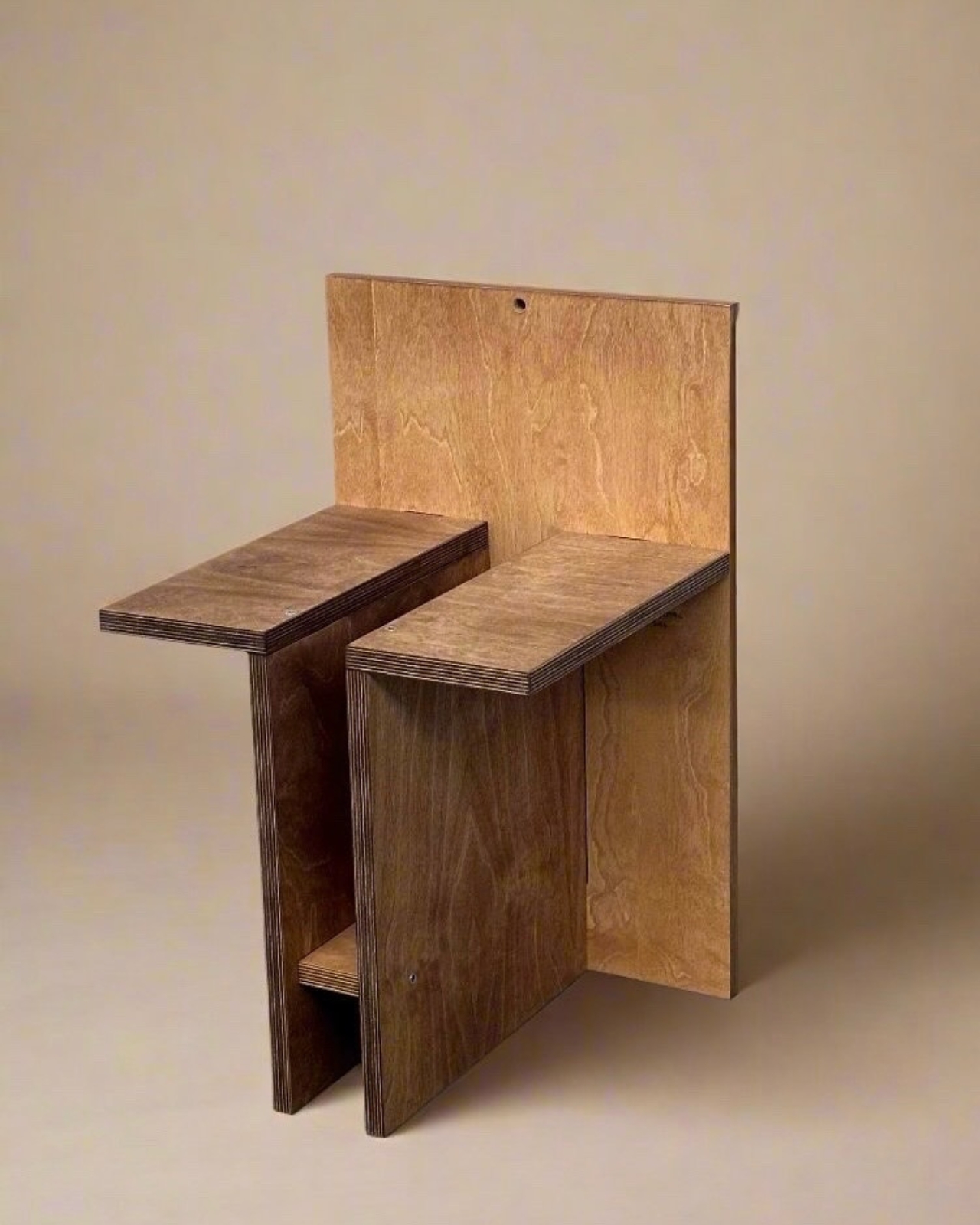
Sisto, designed by Italian designer Edoardo Lietti, demonstrates that genius often lies in simplicity. Born out of a desire to combine classic Italian craftsmanship with contemporary minimalism, Sisto is a multi-functional furniture piece made from just six panels of plywood. At first glance, it may appear to be a simple chair, but its true magic lies in its ability to transform effortlessly into a variety of household essentials.
Flip it, turn it, or stack it, and Sisto becomes a low stool, side table, bookshelf, or work desk. Its geometric design and exposed fasteners highlight the honest beauty of the materials while offering surprising flexibility. This piece draws inspiration from the regal throne, yet its understated elegance and practicality make it suitable for any space, from compact apartments to modern offices.
What we like
- Sisto’s ability to morph into multiple furniture types makes it exceptionally practical for small spaces or anyone who values adaptability.
- The clean lines, exposed joints, and natural wood finish give Sisto a timeless charm that fits seamlessly into both modern and rustic interiors, making it a design-forward choice.
What we dislike
- Due to its lightweight construction and the use of only six panels, some configurations may feel less stable, especially when used as a taller shelf or table.
- While the exposed fasteners and plywood are part of the design’s charm, they may not appeal to those who prefer upholstered or more refined furniture finishes.
4. Lotte Chair


The Lotte Chair by Sarah Hossli exemplifies a human-centered approach, seamlessly blending form and function to address a real need with refined elegance. Developed in partnership with the Neubad multigenerational house in Basel and furniture manufacturer Girsberger, this chair demonstrates how thoughtful innovation can enhance everyday life.
The standout feature of the Lotte Chair is its extended armrests, which wrap fully around the seat to form an intuitive handrail system. This allows elderly users to rise from the chair with minimal effort and greater independence. The design is the result of thorough research, including prototype testing with residents in care homes and consultations with medical professionals, ensuring that it meets practical and ergonomic needs.
What we like
- Effectively addresses mobility challenges for elderly users while maintaining a dignified appearance.
- Incorporates circular economy principles, making it easy to maintain and environmentally responsible.
What we dislike
- The specialized nature of the design may limit its appeal for general use.
- The complexity of production could contribute to higher manufacturing costs.
5. Biting Edge


As pet ownership continues to rise, so does the demand for furniture that caters not only to humans but also to their four-legged friends. Biting Edge, founded by sisters Ivana and Tamara Petruša, has made a name for itself by merging minimalist design with sustainability and pet-friendly functionality. Recognizing that pets are central members of many households, the brand’s pieces are thoughtfully designed to serve both owners and animals.
Among Biting Edge’s impressive offerings is “Eat Prey Love,” a dog feeder that incorporates airtight storage for kibble, treats, and accessories, and features adjustable bowls to accommodate pets of various sizes. The “By The Way” modular wall shelf, “Bowls and Flowers” wall-mounted feeder and planter, “Beauty for the Beast” mini house, and “One Bite Stand” solid wood feeder are all crafted from high-quality, non-toxic materials, ensuring safety for pets and peace of mind for owners.
What we like
- The thoughtful ergonomics and adjustable features ensure that pets of different sizes and needs are accommodated, making daily routines more convenient for both pets and owners.
- The use of non-toxic, high-quality materials underscores a commitment to environmental responsibility and the health of household members.
What we dislike
- While perfect for pet owners, those without animals may find the furniture’s features unnecessary, limiting its versatility for broader audiences.
- The focus on sustainability and quality materials can lead to higher costs compared to mass-market pet furniture.
6. Loopo System
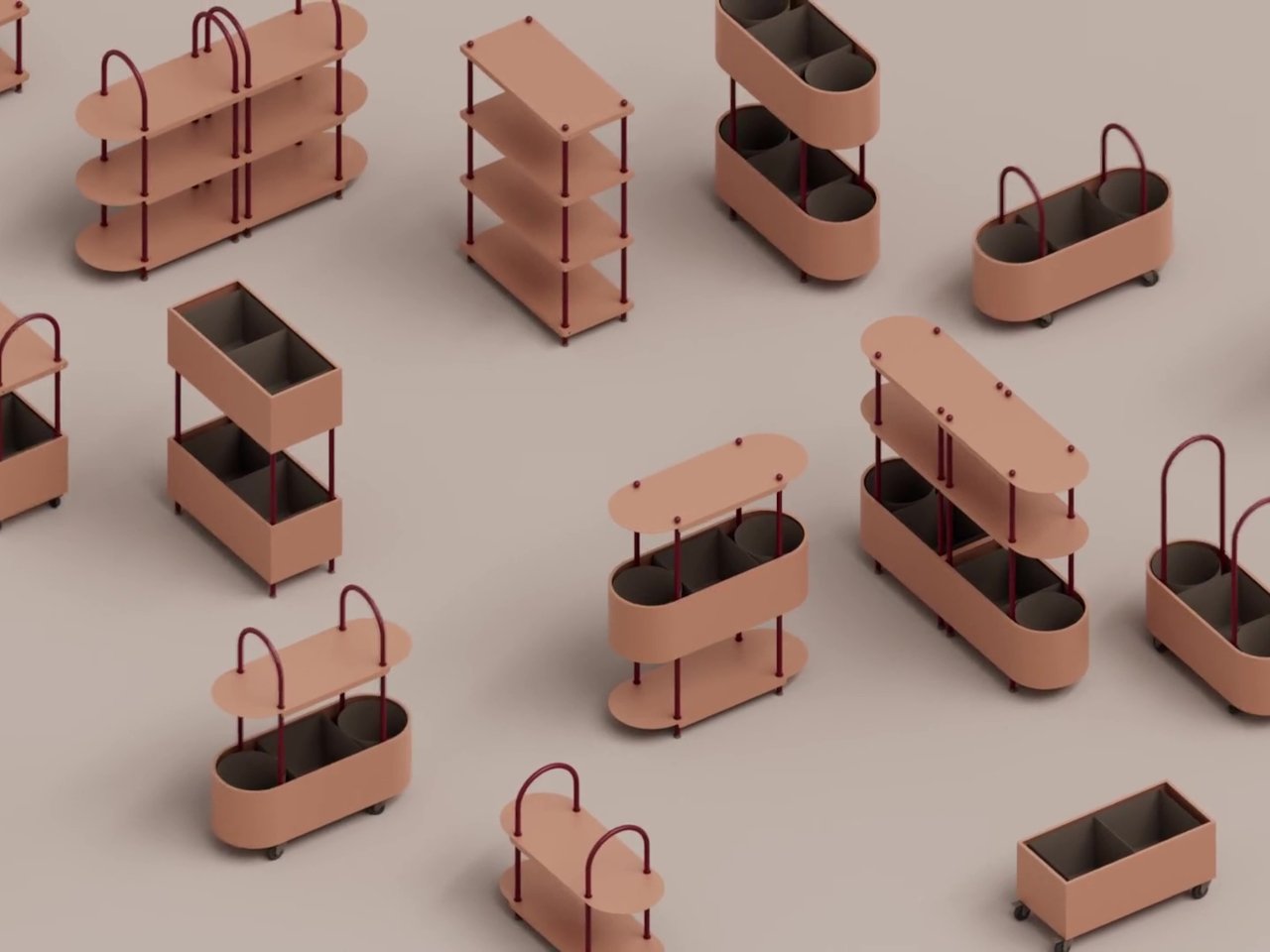
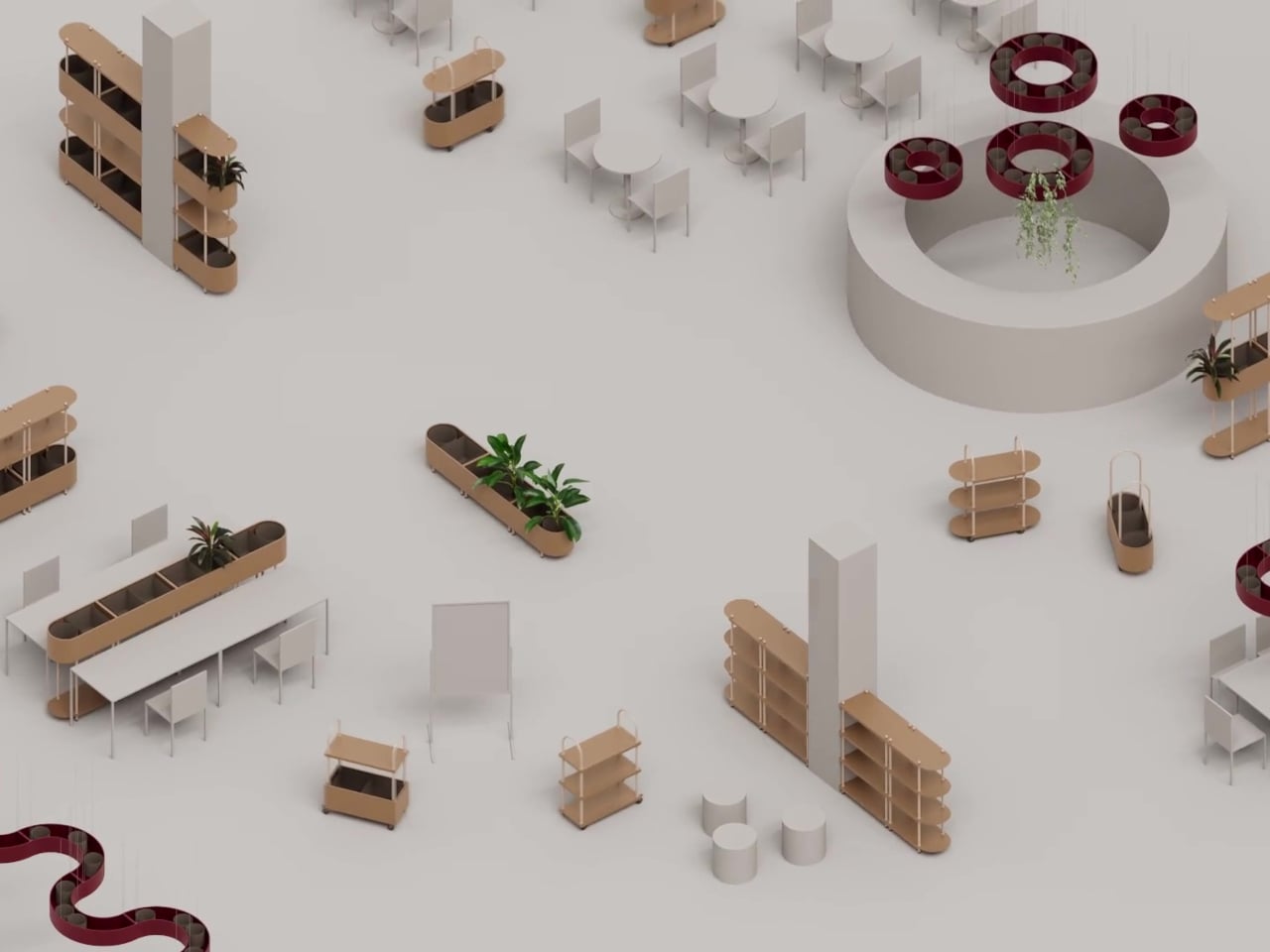
The Loopo Modular Furniture System is a game-changer for anyone who values flexibility and creativity in their living space. Inspired by the mathematical concept of loops—patterns that repeat endlessly with infinite variations—Loopo reimagines furniture as a continuously adaptable system rather than a static object.
Each component serves as a building block, allowing users to experiment with arrangements and create custom solutions for their unique needs. From shelving units and storage to seating and display surfaces, Loopo can be reconfigured countless times, offering both function and fun. The system stands out for its adaptability but also for its user-friendly design. Unlike traditional modular furniture that can require specialized tools and technical know-how, Loopo pieces connect intuitively, making assembly and rearrangement accessible to everyone.
What we like
- The modular components can be arranged and rearranged to fit changing needs, making the system ideal for dynamic households, offices, or display spaces.
- By reducing the need for new materials and allowing for repeated use and reconfiguration, Loopo supports eco-friendly living and responsible consumption.
What we dislike
- The sheer number of possibilities can be overwhelming for some, requiring time and experimentation to find the best configuration for a given space.
- While highly functional, the system’s focus on modularity means some elements may be less comfortable than traditional, purpose-built furniture, particularly for seating.
7. duk Furniture

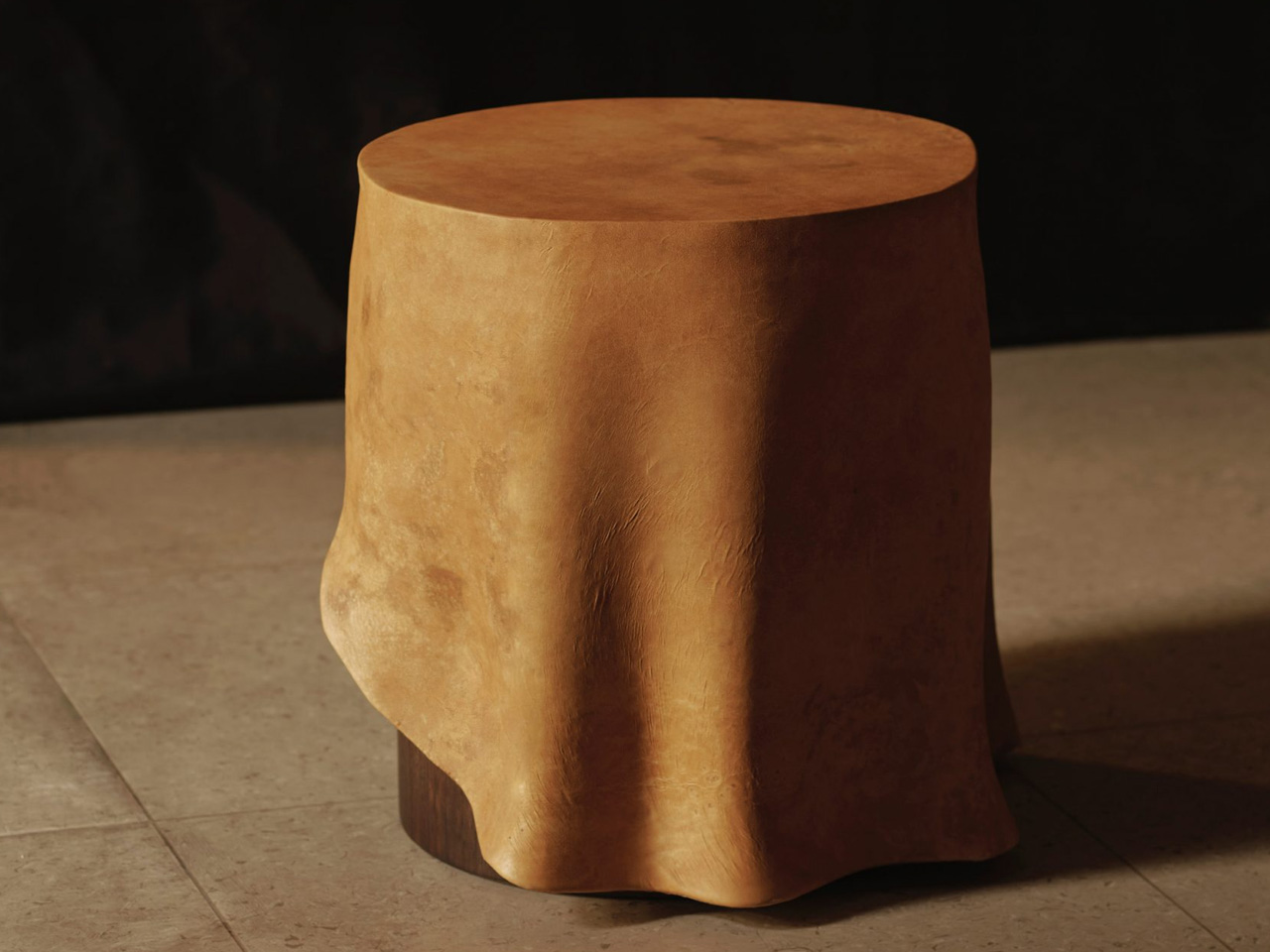
Furniture design often walks the line between form and function, but the Duk series by Studio TOOJ blurs that boundary with a touch of magic. This collection, developed in partnership with biotech innovator MycoWorks, is named after the Swedish word for “tablecloth” and is visually inspired by the draped softness of fabric, despite being crafted from rigid materials.
The secret lies in the use of Reishi—a groundbreaking, leather-like material derived from the root structure of mushrooms—paired with meticulously sculpted wood. The result is furniture that appears to float, with surfaces that ripple and fold like cloth, creating an illusion that captivates and delights. Each piece is finished with the innovative Reishi material, giving it a unique texture and organic feel that sets it apart from conventional furniture.
What we like
- The illusion of flowing fabric combined with the tactile beauty of organic materials makes each piece a conversation starter and a functional piece of art.
- The use of mushroom-derived Reishi material demonstrates a commitment to sustainable practices and the exploration of new, eco-friendly resources in furniture making.
What we dislike
- While visually stunning, the unique materials used in the Duk series may be more susceptible to wear or damage compared to traditional finishes, requiring careful handling.
- The innovative construction and materials might necessitate special care routines, which could be less convenient for users seeking low-maintenance furniture options.
8. Flat Stool


The Flat Stool highlights how simplicity and ingenuity can come together in modern furniture design. Instead of relying on screws, hinges, or adhesives, it uses gravity and precise dovetail joints to stay securely assembled. This avoids the use of potentially harmful glues and also makes the assembly process intuitive and environmentally friendly.
A key aspect of this stool is its ability to transform from a flat-packed shape into a functional seat without any extra hardware. This is possible thanks to kerf bending, which enables the sides to curve gracefully, resulting in a smooth, cohesive silhouette. The Flat Stool is both easy to transport and aligns with sustainable design principles, making it an appealing choice for eco-conscious consumers.
What we like
- Uses sustainable construction techniques, avoiding screws and adhesives.
- Simple flat-pack format makes it easy to assemble and move.
What we dislike
- May lack the stability found in stools with traditional metal fittings.
- Minimalist build may restrict it to lighter or occasional use.
9. Walle


The Walle Stool masterfully blends minimalism with practical function, offering a thoughtful solution for those brief pauses throughout the day. Designed for transitional spaces where a quick rest is needed, this metal stool cleverly incorporates storage for two to three books, keeping a short literary escape always within reach. It’s an invitation to slow down, reflect, or recharge—even if just for a few minutes.
The stool consists of only four main parts and can be assembled with just four screws. The bottom shelf locks into place using notches in the legs, eliminating the need for extra hardware. This straightforward construction makes assembly quick and easy and also ensures the stool can be packed flat, making it convenient for shipping and storage, perfect for compact living environments.
What we like
- Built-in book storage makes it ideal for spontaneous reading breaks.
- Straightforward assembly and compact packaging suit small spaces and frequent movers.
What we dislike
- Limited storage may not satisfy those with larger book collections.
- Minimalist design might not appeal to fans of more decorative furniture.
10. Tila Chair


The Tila Chair from Shepherd Studio is an interesting exploration of density and materiality in modern furniture design. With its seat and backrest composed of hundreds of polished spheres, this chair functions not only as seating but also as an eye-catching sculptural centerpiece. Its unconventional form breaks away from traditional seating expectations, making it a great conversation starter and a dramatic addition to any space.
Inspired by the classic marble game, Tila, the chair is constructed using 210 stainless steel spheres, all supported by a sleek tubular frame. This playful yet sophisticated approach highlights both the tactile and visual qualities of the materials, creating a dynamic interplay between structure and surface. The Tila Chair blurs the line between functional furniture and contemporary art, elevating the ambiance of modern interiors.
What we like
- The lustrous chrome finish reflects its environment, amplifying the chair’s visual impact.
- The array of spheres creates captivating patterns of light and shadow, adding depth and intrigue.
What we dislike
- The design’s intricate surface may be difficult to clean, as dust and fingerprints can accumulate between the spheres.
The post 10 Best Furniture Designs Of March-April 2025 first appeared on Yanko Design.



























































